
The Fagales are an order of flowering plants, including some of the best-known trees. The order name is derived from genus Fagus, beeches. They belong among the rosid group of dicotyledons. The families and genera currently included are as follows:
Family is one of the nine major hierarchical taxonomic ranks in Linnaean taxonomy. It is classified between order and genus. A family may be divided into subfamilies, which are intermediate ranks between the ranks of family and genus. The official family names are Latin in origin; however, popular names are often used: for example, walnut trees and hickory trees belong to the family Juglandaceae, but that family is commonly referred to as the "walnut family".
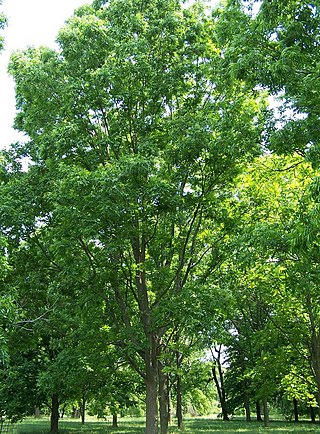
The pecan is a species of hickory native to the southern United States and northern Mexico in the region of the Mississippi River.
In biology, a tribe is a taxonomic rank above genus, but below family and subfamily. It is sometimes subdivided into subtribes. By convention, all taxa ranked above species are capitalized, including both tribe and subtribe.

The Juglandaceae are a plant family known as the walnut family. They are trees, or sometimes shrubs, in the order Fagales. Members of this family are native to the Americas, Eurasia, and Southeast Asia.

The Noctuidae, commonly known as owlet moths, cutworms or armyworms, are a family of moths. They are considered the most controversial family in the superfamily Noctuoidea because many of the clades are constantly changing, along with the other families of the Noctuoidea. It was considered the largest family in Lepidoptera for a long time, but after regrouping Lymantriinae, Catocalinae and Calpinae within the family Erebidae, the latter holds this title now. Currently, Noctuidae is the second largest family in Noctuoidea, with about 1,089 genera and 11,772 species. This classification is still contingent, as more changes continue to appear between Noctuidae and Erebidae.

Rhoiptelea is a monotypic genus of flowering plants in the family Juglandaceae. It contains a single species, Rhoiptelea chiliantha, commonly known as the horsetail tree. This genus was previously recognized in its own family, Rhoipteleaceae, but the APG III system of 2009 placed it in the Juglandaceae family. Rhoiptelea chiliantha is native to southwest China and north Vietnam and lives at the elevation of 700-1600m in mountainous areas. The trees are wind-pollinated, the flowers arranged in large sagged panicles usually 32 cm long like horse tails, and the fruit is a small botanical nut with rounded wings. The leaves are pinnately compound and papery. The trees are usually 17 m high and with 40 cm diameter. It is a protected species of China.
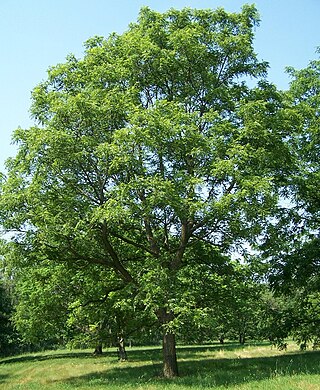
Juglandeae is a tribe of the Juglandoideae subfamily, in the Juglandaceae family.
Carya sinensis is a species of tree native to southwestern China and northern Vietnam, in the hickory genus Carya. It is sometimes called Chinese hickory or beaked hickory. It is closely related to Carya kweichowensis.
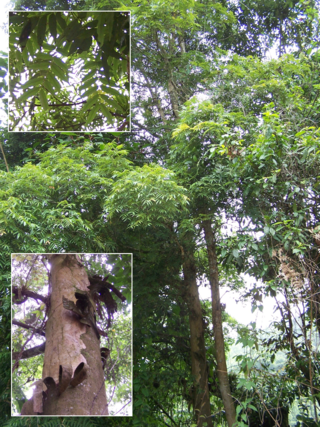
Oreomunnea is a genus of two species of flowering plants in the family Juglandaceae, native to southern Mexico and Central America, where they occur in montane rainforest.

Platycarya is a genus of flowering plants in the family Juglandaceae native to eastern Asia in China, Korea, and Japan.
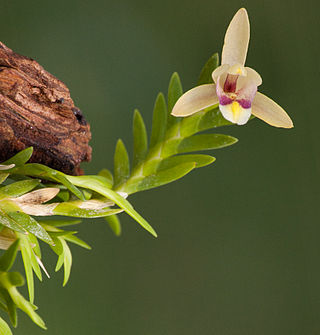
The Vandeae is a large monophyletic tribe within the family of orchids.

Juglandoideae is a subfamily of the walnut family Juglandaceae.

Caryinae is a subtribe of the tribe Juglandeae subfamily in the Juglandaceae family.
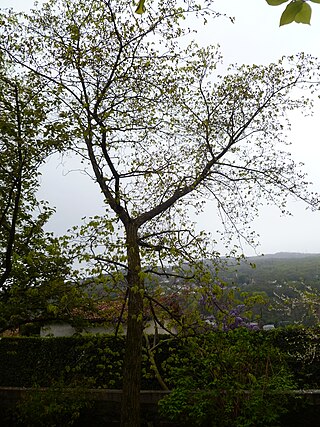
Platycaryeae is a tribe of flowering plants in the family Juglandaceae, and comprising a single living genus Platycarya. The tribe is now native to eastern Asia in China, Korea, and Japan.

Scaritinae is a worldwide subfamily of beetles in the family Carabidae, containing more than 2400 species in over 140 genera.

Rauvolfioideae is a subfamily of the flowering plant family Apocynaceae. Many species are woody lianas, others are shrubs or perennial herbs.

The Euchromiina are a subtribe of tiger moths in the family Erebidae. It was described by Arthur Gardiner Butler in 1876. Many species in the subtribe are mimics of wasps. Euchromiina have always been considered closely related to the subtribe Ctenuchina due to their similarity to moths and wasps. These two subtribes make up around 3,000 valid species, the majority of which occur in the Neotropics.
Wayne Eyer Manning was an American horticulturist and botanist.

















